The mucous membrane of the nasopharynx is very sensitive. Therefore, even minimal exposure to it can result in serious injury. Disturbed mucous membrane is a big problem. It ceases to perform its main function, namely to humidify and filter the air that enters the lungs.
Because of this, a person runs the risk of catching an infectious or viral disease... That is why it is important to carefully monitor the condition of the nasal mucosa and timely treat it.
At home, the patient should rest in bed, raising his head on 2-3 pillows. Edema and swelling are minimized by keeping the head above the heart. An assistant should be available for excursions from bed to bathroom. If you're constipated, use a stool softener or mild laxative.
It is normal for the nose, upper lip, or cheeks around the eyes to swell and bruise for several days after surgery. This will gradually fade over the next 7-10 days. Ice on the face, bridge of the nose and eyes, as well as being carried over, will help to minimize these problems. It will also help with postoperative swelling and pain. Some patients have found frozen vegetables packaged to be convenient ice packs that fit the face.
Before starting treatment, it is required to find out the cause of the drying out of the nasopharyngeal mucosa. In this case, the patient will be selected the most suitable drug that will quickly and effectively solve the unpleasant problem.
Basic principles of nasal mucosa treatment
You can restore the nasopharyngeal mucosa using different methods. Usually, patients who are faced with such a symptom try to get rid of it in the following ways:
A nasal splint or cast will cover the outside of the nose and will usually be removed one week after surgery. As the swelling decreases, the tire tends to decrease. If the cast gets wet, it may come out prematurely; This is usually not a problem and does not affect the outcome of the procedure.
Moderate nose bleeding is normal and will gradually decrease. The bandage will collect blood and should only be changed when saturated. It is not uncommon to change these dresses every hour for the first 24 hours after surgery. This bandage will usually not be needed after a few days. Do not take aspirin, medications containing aspirin, or nonsteroidal anti-inflammatory drugs for 3 weeks after surgery.
- The use of funds that have a healing effect.
- Passage of physiotherapy procedures.
- The use of corticosteroid medications.
- Treatment with traditional medicine.
- Conducting spa therapy.
The patient must set himself the task of not only getting rid of the symptom, but also eliminating the interaction with the factor due to which dryness and irritation in the nose appeared.
It is advisable to follow a light, soft and legal diet that is tolerated after the anesthetic has been restored. Avoid hot liquids for several days. It is best to go slowly with food immediately after the procedure to prevent postoperative nausea and vomiting. Patients sometimes vomit once or twice immediately after surgery; If they persist, medicine can be prescribed to regulate the stomach. It is important to remember that a good overall diet with plenty of rest promotes healing.
Antibiotics are given after surgery. It is important to complete all orders. Some form of drug will also be prescribed, which must be taken when needed. If using drugs, it is important not to direct or participate in activities where impaired judgment can lead to injury. For postoperative nausea or vomiting, an anti-vomiting medication such as phenergan can be prescribed. Possible drug reactions to any of these medications, such as a rash, should be reported to your doctor as soon as indicated.
What traditional medicine offers
You can moisten the dry mucous membrane of the nasopharynx at home. To do this, it is enough to use special medications that are freely available in pharmacies.
In order not to be mistaken in choosing a medication, it is recommended that you first undergo an examination by a specialist. He will identify the exact cause of the ailment and select the most effective medicine specific patient.
Side effect of taking medications
No other prescription or over-the-counter medicines should be taken without your doctor. Sometimes it happens that he has a stuffy nose, not knowing the origin. However, this type of discomfort is not uncommon. Therefore, we have to ask, in the case of a choking nose in the morning, the reasons for this can explain this. We will see that they can be many and varied. Allergies responsible for stuffy nose.
Nose is often blocked due to allergies
For example, people who are allergic to dust mites or dust can easily feel nasal congestion during the night if their laundry or room is not clean enough. In this case, to avoid nose choking, it will be necessary to regularly change sheets and pillowcases. It will also protect the mattress and use as many dust mites as possible.
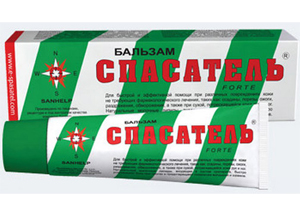 Treatment of a dry nasal mucosa is carried out with the following medications:
Treatment of a dry nasal mucosa is carried out with the following medications:
- Ointments.
- Spray.
- Drops.
- Solutions for inhalation.
In some cases, changing the microclimate at home or changing the workplace helps to completely get rid of the painful condition. The patient has to take such measures if the malaise is caused by inhalation of harmful substances contained in the air.
Dry air at the onset of nasal congestion
It is also possible that the nose is blocked in the morning if the surrounding air is too dry. Thus, if the bedroom is not humid enough, the nasal mucus will tend to thicken and obstruct the nose. Using a humidifier can solve this problem. Some medications responsible for stuffy nose.
Certain medicines can also cause a stuffy nose in the morning.
To find out, we need to look at side effects medications we take to see if this reaction is mentioned. On the other hand, if the onset of nasal congestion coincides with a new treatment, the two may be related. Note that stress is sometimes responsible for nasal congestion.
Dryness and irritation in the nose may well be caused by prolonged exposure to a cold room or excessive dryness of the air and its supersaturation with dust, as well as other small particles acting as an irritant.
In children, the nasopharynx usually dries up due to the fact that they have to breathe through the mouth. Nasal breathing may be impossible for them due to the appearance of adenoids or a cold.
The disease can begin within months to several years after nasal intervention, the most common complaint of patients is a paradoxical feeling of nasal congestion, dry and "empty nose". These events are sometimes accompanied by severe pain in the face and head. Constant pain and a feeling of suffocation lead to severe psychological and cognitive impairment.
Anatomy and role of the turbinates
The final turbinates are a continuation of the upper and middle ethmoid labyrinth and the lower cones are separate bones, bulky cones. The coiled tail opens the nasopharynx. The turbinates of the mucous membrane are covered with a very dense, formed respiratory epithelium and subepithelial tissue. Cilia are designed to trap and remove foreign particles that enter the nose through the air. Respiratory epithelial cells and goblet cells, which secrete mucus, which provide the optimum degree of air humidity to enter the lungs.
To restore the normal microflora in the nose, eliminate signs of irritation and dryness, proven drugs help:

If a person is interested in how to soften the nose, he may be offered various medicineswhich are made from sea water or sea \u200b\u200bsalt... They are used for rinsing the nose and for instillation.
The mucosa is highly vascularized, thereby creating the function of an air heater. The vasculature is responsible for changes in the thickness of the turbinates that occur in physiological adaptation to environmental conditions. Arterioles, which provide nutrition for the dermis of the branch mucosa, to reach the epithelium, they carry diffusion. Blood is collected in tests of this venulo, which flows into a "gap" - a vein with a large diameter that is equipped with a functional tightening sphincter, blocking the blood inside the vessel.
This alternation of contraction-relaxation of the sphincter is controlled by the sympathetic nerve as follows: when the muscle cells in the walls of the sympathetic veins are stimulated, they contract, which causes the blood vessels to dilate and empty the remaining gaps. Thus, the nasal mucosa becomes thinner, allowing the airway to expand. It is a survival adaptation, as the sympathetic nervous system is responsible for the "fight or flight" positions of the body. Thus, the exercise of this cascade of events is triggered in order for the body to receive the required amount of oxygen.
Medicines such as Aqua Maris and Physiomer help to quickly eliminate signs of dryness of the mucous membrane. They also soften mucus and facilitate its smooth elimination.
Some medicines not only treat, but also help to strengthen the mucous membrane of the nasopharynx, which, in a weakened state, is attacked by a large number of pathogenic microorganisms.
The mechanism underlying the plaster sprays blood unlocking the gaps. Respiratory mechanics are based primarily on two concepts: resistance and flow modes. We believe that the tube is the airway showing changes in the diameter of the lumen. When the tube is narrowed, when it has a smaller lumen, the fluid is more difficult to pass; Thus, the tube has a greater resistance to fluid flow.
Laminar flow regimes and turbulent regimes. The increased resistance results in laminar flow. If the flow is laminar, the air flows in a straight line and does not "hit" the walls of the tube; in a turbulent flow to form a small "swirl" to slow the flow. Paradoxically, airways it is still necessary to bring the turbulent flow, as the nerves responsible for transmitting the signal to the brain inspiring the mucous upper wall of the "tube". This is where the turbinates, called turbines, perform this function according to their shape.
Physiotherapy treatments
Therapeutic procedures can relieve irritation and dryness of the nasopharyngeal mucosa. In such a situation, doctors recommend warming up the paranasal sinuses and the nasal dorsum zone. This procedure can be done at home. To do this, you should find an UFO lamp. You will also need sand or salt, which act as a source of dry heat.
In a sink, the initially laminar air flow becomes turbulent. Thus, receptors in the mucous membrane and nerve endings are stimulated, and the brain receives information that a person is breathing. In addition to the turbinates, for the trachea, laminar flow is restored to get efficiently faster into the body.
Causes dry nose
It combines the two concepts above. If the flow is turbulent it is necessary to increase the drag to slow down the turbulence to some extent, so that the air does not completely stagnate. Therefore, it is necessary that the turbinate is sufficiently strong; Thus, a fairly narrow gap. Otherwise, the receptors of the mucous membrane may not be stimulated and the brain does not receive the inspiration signal. Nasal resistance is delayed expired, providing an optimal period for exchange.
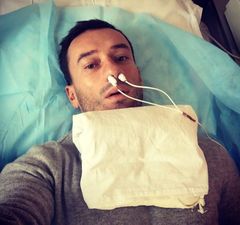
The success of treatment also depends on whether the patient has bad habits. To get rid of an unpleasant symptom, he will have to forget about smoking and alcoholic beverages. It is also advisable to avoid being in places with dirty air, which exacerbates an already poor condition.
What to do if symptoms persist
Trigeminal nerve endings are primarily responsible for the mucous membrane of the turbinate innervation. It has been found that by chemically stimulating the receptors that these endings cause a sensation of obstruction in the nose or patent without any noticeable change in the lumen. Thus, the relationship between the pad and the cooling sensation of the patent airway was determined. Inspired air heaters are caused by the loss of mucous membranes, so both participants in this exchange reach their optimal temperature.
Moisturizing the nasal mucosa with folk remedies
An adult or child who suffers from severe dryness in the nose should be offered treatment with folk remedies. Sometimes they work much better than pharmaceutical medicines.
Physiotherapy treatments
Naturally, the most low temperature the nasal mucosa is measured at the end of inhalation, and the most heat - at the end of the expiration. Although oxygen reaches the lungs and, therefore, the rest of the body, the patient does not feel breathing, the symptom is accompanied by the psychological manifestations characteristic of suffocation. Turbulent flow is also needed to humidify the air, as well as to facilitate the trapping of foreign particles in the mucus so that they can be swallowed or removed rather than injected into the lungs.
In the absence of these functions, usually performed by the nasal cornea, the patient develops elevated temperature nasal mucosa, and this together with dry air causes a burning sensation during breathing. In addition, damage to the trigeminal nerve endings can lead to severe "clusters".
If a person often complains of dryness and irritation in the nasal cavity, he should try to get rid of the painful condition with the help of the following traditional medicine:
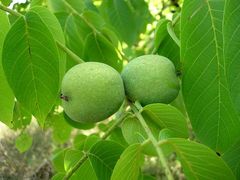
Before starting treatment, you need to make sure that there is no hypersensitivity to natural products and herbs that are used in the preparation of a folk remedy.
Surgical Procedures That Contribute to Vaccine Syndrome
In addition to deflection of the septum, dilated corneas are the most common obstructive cause of breathing difficulties. Partial or complete resection of the cornea is practiced separately, as well as rhinoplasty, septoplasty, polypectomy, or sinus surgery. The methods used to reduce the cornea are different: classical turbinectomy with scissors, electrocautery, cryosurgery, laser evaporation, inferior transverse corneal stretching, submucosal resection, radiofrequency turbinotomy.
Prevention of dry nose
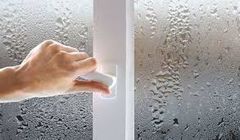 Dryness in the nasal cavity causes severe discomfort in humans. Unpleasant sensations do not leave him until the painful symptoms are completely eliminated. Therefore, it is best to try to prevent the development of such a state. This can be achieved by following certain rules:
Dryness in the nasal cavity causes severe discomfort in humans. Unpleasant sensations do not leave him until the painful symptoms are completely eliminated. Therefore, it is best to try to prevent the development of such a state. This can be achieved by following certain rules:
- Treatment of rhinitis and other similar diseases with vasoconstrictor agents should not be carried out longer than 7 days.
- The crusts that form inside the nose should be removed regularly.
- It is necessary to monitor the level of humidity in the room.
- It is advisable to carry out preventive procedures that help not to catch a cold in the cold season.
As you can understand, it is not necessary to go to the hospital to get rid of the dryness of the mucous membrane in the nasopharynx. This treatment is usually done at home.
If the patient intends to be treated with nasal instillation agents, then he must understand that sometimes such drugs only aggravate the condition. Such consequences can be avoided provided that a suitable medication is selected and its recommended dosage is observed.
And a little about secrets ...
If you or your child are often ill and are treated with antibiotics alone, know that you are treating only the effect, not the cause.
A dry nose is annoying and uncomfortable, but not particularly worrying. The appearance of blood crusts is a more obvious symptom, can cause serious suffering, but most people are in no hurry to see a doctor. Dry and itchy crusts in the nose with blood can be a symptom of a minor illness or a complication of rhinitis. But, perhaps, they are a signal of a serious illness, which only a specialist can cope with.
Dryness and blood crusts in the nose: possible causes
Treatment methods: medicines and folk remedies

- The choice of treatment should be determined by the doctor after a thorough examination and establishment of the cause of the onset of symptoms. If symptoms signal pathology, treatment with folk remedies and self-purchased medicines can aggravate the situation. In the most difficult cases, a decision is made about surgical intervention.
- If the cause of bloody crusts and nasal irritation is external factors (wool, dryness or air pollution), treatment may simply be to correct the cause. A humidifier in your home, ventilation, regular damp cleaning, and getting rid of carpets that collect dust and germs will help solve the problem.
Side effects of drugs can be removed with moisturizing and mucous ointments and folk methods.
Medication: ointments, sprays, drops
It should be immediately clarified that you cannot tear off blood crusts... Itching and other discomfort should be relieved by softening the crusts and moisturizing the nasal mucosa. Read about how to properly blow your nose with a runny nose without damaging the mucous membrane.
- For the treatment of blood crusts in the nose, experts often recommend ointments... The most popular and affordable ones are Flemming's ointment, Traumeel S and Rescuer. Ointments for crusts in the nose act quickly, have no contraindications and are sold at a low price.
- Perfectly relieves dryness of the nasal mucosa and promotes rapid healing preparations based on sea salt topical application (sprays and nasal drops). Pay attention to Marimer, Aqua Maris, Otrivin Sea, Physiomer, Salin and Humer. Gel "Pantestin" gets excellent reviews. These drugs restore the balance of the mucous membrane, strengthen blood vessels and protect the nasal passages from the penetration of pathogenic bacteria. Find out about.
The dangerous vasomotor rhinitis of pregnant women can be found at.
How can crusts in the nose be cured with home remedies?
Folk remedies: milk, oil, sea water
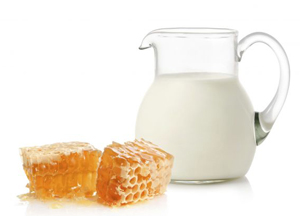
- In childhood, each of us, mothers and grandmothers were treated for colds warm milk with honey... Most people know that milk with honey improves sleep. But few know that this drink stimulates the production of natural mucus in the body and is an excellent medicine for dry crusts in the nose. How to treat laryngitis with milk, read on.
- To speed up wound healing and soften blood crusts will help oil... You can even use sunflower oil, but sea buckthorn oil is the best option in this case. If you have a dry and crusty nose, you can lubricate the nasal passages or insert cotton swabs soaked in oil into your nose for half an hour.
- Will help cure the disease and sea \u200b\u200bwater... If during a trip to the sea it turned out to stock up on a certain amount, just flush the nasal passages. You can make seawater from over-the-counter salt, but choose pure water without dyes or additives. Pour 10 g of sea salt into 1 liter of water and bring to a boil. Cool the solution, strain and start rinsing.
You will learn how to properly rinse your nose with seawater in the next video.
What to do if symptoms persist
If the cause of the dryness of the nasal mucosa and the appearance of blood crusts is correctly determined, relief from the use of ointments, sprays and folk remedies should come in a few days.
If you are worried about persistent crusts in the nose, you should go to the doctor and get tested. Pathologies in which a decision on surgical intervention is made are rare. Having established the cause, the doctor will prescribe adequate treatment, and your illness will go away forever.
